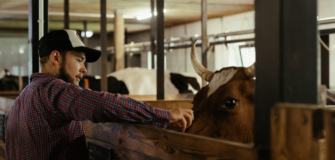Woolworths marks green packaging milestone as it removes 9,000 tonnes of plastic from its home brand
Share

Woolworths has hit a green packaging milestone as it recently removed about 9,000 tonnes of plastic packaging from circulation over the last four years.
The feat was achieved as the supermarket giant transitions its entire Own Brand range to recyclable, compostable or reusable packaging by 2023.
The milestone comes in the lead up to World Environment Day and is the result of a sustained effort to reduce plastic packaging at Woolworths in line with its 2025 Sustainability Plan.
Related: ALDI Australia sets zero waste to landfill target by 2025
The packaging has been changed on more than 550 products, which has seen almost 800 tonnes of plastic removed from produce, around 600 tonnes removed from bakery products and approximately 400 tonnes yearly removed from milk bottles since 2018.
Woolworths’ sustainable packaging team are progressively working across the supermarket’s entire Own Brand range and fresh produce to either remove plastic packaging altogether, reduce the volume of plastic used, increase the use of recycled materials or make packaging 100 per cent recyclable.
Woolworths Supermarkets Head of Sustainability, Adrian Cullen said Wooloworths’ knows the steps they take to become a more sustainable supermarket today will help create a better tomorrow for generations to come.
“More and more customers want to reduce their plastic use, and we’ve taken approximately 9,000 tonnes of plastic out of our packaging over the last four years to make it easier for them to shop more sustainably. To put this in perspective, it’s the equivalent weight of 16 A380 aircraft,” Cullen said.
“We’re proud of the progress we’ve made in going greener, but we know there’s plenty more to do and will continue to make changes to cut plastic in the products our customers put in their shopping baskets,” he said.
He continued that some plastic packaging is necessary to preserve food and minimise food waste, so where they can’t remove it, they are challenging themselves to reduce it.
“We’re also working to include more recycled plastic to minimise its impact,” he revealed.
Several packaging changes are already implemented across Woolworths stores, including replacing plastic trays with pulp trays for tomato varieties, replacing plastic tags on produce with paper, and using paper meat trays for their special line of steaks.
Over the coming years, the supermarket will implement several more sustainable packaging changes to meet their goals for their Own Brand packaging.
By 2023, Woolworths aims to have 100% of its Own Brand packaging as widely recyclable, reusable or compastable. The supermarket also aims to halve its use of new (virgin) plastic packaging by 2024 and by 2025, use an average of 60% recycled material in packaging.
Woolworths has also been moving to reduce their usage of single use plastics. Across the range, the supermarket has replaced plastic cotton tip stems with paper and sugarcane stems, which is expected to save almost 500 million pieces of plastic annually, and has also removed single use plastic shopping bags nationwide.
Since 2018, the supermaket has removed over 280 million straws and has seen a reduction of 9 billion bags in circulation.
In October this year, Woolworths will also remove all single-use plastic tableware like cutlery, cups, plates and bowls from sale nationwide, which is expected to result in 1,700 tonnes less plastic annually,
To help divert household soft plastic – which can’t commonly be recycled through curbside council bins – from landfill, Woolworths offers soft plastic recycling through its network of REDcycle collection bins, available in every store. Since 2017, Woolworths’ REDcycle program has recycled 1.1 billion pieces of soft plastic.
Woolworths will also roll out battery and mobile phone collection bins across its 1,000 supermarkets by August.















